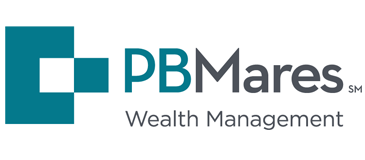For some taxpayers, December means a race against time to make their required minimum distributions (RMDs) for the year. As the deadline approaches, it’s also important to consider whether estimated taxes have been paid on RMD income.
Withholding federal and/or state taxes from RMDs is not automatic, and the failure to do so could result in an unexpected tax bill in 2023 and potentially an underpayment penalty.
RMD Rules for IRAs
Required minimum distributions (RMDs) are mandatory annual withdrawals from traditional IRAs and other qualified retirement accounts, like 401(k) or 403(b) plans. The required beginning date to make the first RMD is April 1 of the year after the taxpayer turns 72. During the first year, taxpayers must make two withdrawals: one by April 1 and the second by December 31. All other subsequent years, the RMD is due by December 31, and can be made in multiple withdrawals or one lump sum at the end of the year.
The RMD for the current tax year is based on the IRA’s balance as of December 31 of the prior tax year. This amount is then divided by a life expectancy factor, which the IRS determines. The deadline to make annual RMDs is December 31 of the current tax year. Failure to withdraw an RMD could result in a tax penalty of up to 50 percent of the amount not withdrawn. Taxpayers with multiple accounts will need to calculate their RMD for each account separately; however, if there is more than one IRA, the entire RMD amount for both accounts can be withdrawn from one IRA.
It is always an option to withdraw more than the minimum amount each year depending on a taxpayer’s individual circumstances. RMD rules for IRAs don’t apply to Roth IRAs unless the account is inherited.
RMD Rules for Inherited IRAs
There are different rules for inherited IRAs, and the SECURE Act made several changes to RMD treatments in tax years beginning in 2020. Unless the designated beneficiary is a spouse, the entire balance of the IRA must be withdrawn ten years after the original account holder’s death.
Spousal and other eligible beneficiaries have more time to withdraw inherited IRA funds. They can liquidate the account over their own life expectancy. The life expectancy provision is available to spouses, minor children under the age of maturity (usually 18, but varies state to state), a chronically ill or disabled person (as defined by the Social Security Administration), or a beneficiary not more than ten years younger than the account holder.
If the account holder passed away before 2020, taxpayers should speak with their tax professional or financial advisor for pre-SECURE Act RMD rules.
Taxes and RMDs
Most custodians (and financial advisors) should let the taxpayer know how much they need to withdraw. What taxpayers may not realize is that they can withhold federal and/or state taxes from these withdrawals.
Many taxpayers don’t realize that the IRS requires estimated quarterly payments be made as income is received throughout the year. Failure to do so may result in an underpayment penalty. During a taxpayer’s working life, if they maintain W-2 employment, estimated tax payments usually aren’t something they worry about because taxes are automatically withheld from the paychecks.
Once retirement kicks in, however, quarterly estimated payments must continue to be made as income is received. Income from retirees may be Social Security, pensions or annuities. Unlike W-2 income, most retirement income doesn’t automatically withhold taxes. It’s the taxpayer’s responsibility to calculate and remit estimated taxes throughout the year.
Once a taxpayer turns 72 and RMDs must begin for IRAs, the IRS allows withholdings on these distributions to act as though they have been paid pro-rata throughout the year, even if the taxpayer only makes one distribution in December.
RMD Tax Strategies
If a taxpayer is fortunate enough to not need their RMD to live off during the year, a planning technique may be utilized in which the RMD is paid at the very end of the year with a percentage (large or small based on an individual’s tax situation) applied toward taxes.
Some taxpayers may elect to receive their full benefits from Social Security, for example, and apply their RMD withholding to the taxes attributable to those benefits. These investors enjoy the potential benefits of leaving assets in their IRAs a bit longer and they don’t have to worry about timely estimated tax payments that are mailed each quarter.
A word of caution regarding RMD withholding: this strategy may not work on state tax liability. Some IRA sponsors allow state tax withholding from RMDs, while others don’t.
Individual tax situations may vary, so be sure to consult with your accountant and your financial advisor regarding RMD distributions, taxes, and techniques to potentially minimize tax liability.
Questions? Fill out the form below and contact us today.
About the Author:





